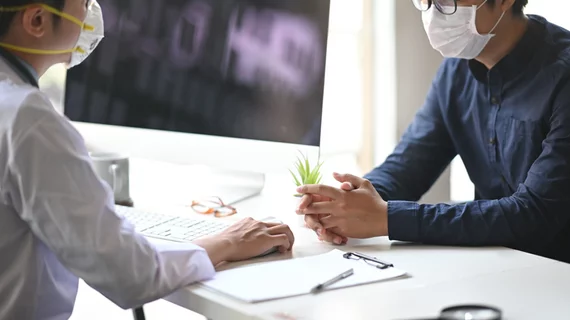As radiology practices resumed nonemergent imaging following strict COVID-19 lockdowns, many of healthcare’s most vulnerable patients were left out in the cold.
That is what happened in the Boston area, as new data reveals that shutdowns exacerbated longstanding inequalities in the use of diagnostic imaging exams. Patients from communities with high poverty rates, unemployment and chronic disease were significantly less likely to undergo a radiology exam, researchers reported Tuesday in JACR.
Similarly, Asian and Hispanic individuals faced much lower odds for receiving exams, compared to white and non-Hispanic patients, according to Ronilda Lacson, MD, PhD, a radiologist at Brigham and Women’s Hospital and Harvard Medical School, and colleagues.
These groups already faced difficulties accessing care before the pandemic and were more likely to be admitted with advanced-stage disease, the authors explained, adding that more needs to be done to close this healthcare chasm.
“This highlights the need for more outreach to these communities in order to address potential resource underutilization and delay in diagnostic care in these vulnerable patients,” the authors added in the study. “In addition, it is important to raise societal awareness regarding various socioeconomic factors that need to be addressed more globally, including providing more financial resources and healthcare access during times of calamities and pandemics.”
For their research, the team retrospectively compared radiology exams performed at their academic medical center and eight affiliated outpatient clinics before (Jan. 1 to March 8) and after (June 7 to July 15) last year’s COVID-19 shutdowns. Visits during closures were excluded, and the group analyzed variables such as race and ethnicity, imaging modalities and care settings.
Overall radiology utilization decreased post-shutdown, falling from 869 exams per day to 502. Inequities also worsened after practices reemerged from the dark, with patients from priority communities— areas with high rates of poverty, unemployment and chronic disease—undergoing 1.8% of services compared to 6.4% pre-shutdown. These individuals also faced lower odds of receiving imaging (odds ratio of 0.25).
Additionally, Asian and Hispanic individuals had lower odds for post-COVID-19 imaging (0.90 and 0.82, respectively). Lacson and colleagues suggested the disparity among Asian groups may be associated with the xenophobia and discrimination they faced during earlier parts of the pandemic.
The direct clinical impact of these trends needs to be studied more in-depth, the authors noted. But regardless, radiology practices will need to understand and help address these issues.
“Additional focus and outreach to some of the most vulnerable patients (based on socioeconomic status, race and ethnicity) will be needed to diminish the potential patient safety and quality of care risks associated with delayed or deferred clinically necessary diagnostic radiology exams during and after the COVID-19 pandemic,” the authors concluded.
Read the full breakdown in the Journal of the American College of Radiology here.

